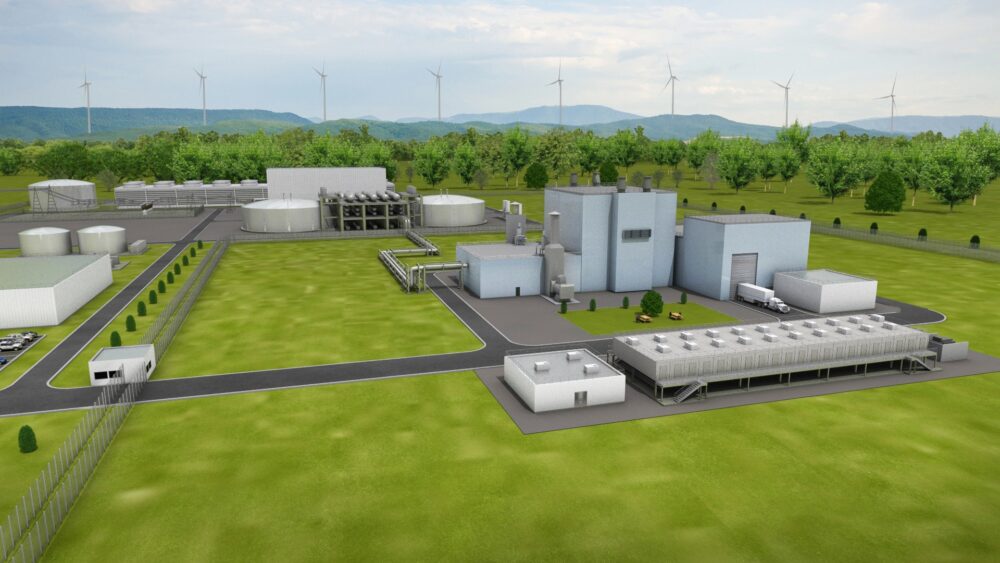Nuclear reactor design and development company, TerraPower and Uranium Energy Corp (NYSE: UEC) announced a memorandum of understanding (MOU) on Friday outlining shared goals for revitalizing domestic uranium fuel supply chains.
This MOU allows both companies to explore the potential supply of uranium for TerraPower’s Natrium reactor and energy storage system presently being built at Kemmerer, Wyoming.
UEC and TerraPower are investing in nuclear fuel and clean energy projects to boost the U.S. economy.
This involves generating carbon-free electricity, creating well-paying jobs and establishing a strong U.S. nuclear fuel supply chain for Small Modular Reactors (SMR), Advanced Reactors (AR), and their high assay low enriched uranium (HALEU) needs.
These new reactors offer advanced options to meet the increasing global demand for clean and constant power without carbon emissions.
“UEC is pleased to form strategic relationships that support the emerging uranium demand from SMRs and ARs, and we look forward to working with TerraPower and the prospect of providing the uranium they need to operate their Wyoming Natrium reactor,” said Amir Adnani, UEC president and CEO.
“In these geopolitically complex times, UEC’s vision is to be the leading provider of conflict-free, American uranium for the existing, as well as the new reactors that will come online.”
The Natrium technology combines a 345-megawatt sodium-cooled fast reactor with a molten salt-based energy storage system that can increase power output to 500 megawatts for addressing peak demand. This makes it the ideal technology to pair with energy grids that rely heavily on renewable resources. The Natrium reactor is the sole advanced reactor capable of supplying grid stability with clean, continuous energy and effortlessly increasing output to meet fluctuating power requirements.
UEC’s production platform in Wyoming comprises a portfolio of over 20 uranium projects, collectively holding the largest S-K 1300 compliant resource base in the United States. Among these projects, four in the Powder River Basin have full permits for in-situ recovery production. These include the Irigaray Central Processing Plant and Christensen Ranch ISR facilities in Johnson County, Wyoming, where UEC will initially concentrate its production efforts.
Read more: ATHA Energy defines 18 high-priority prospective mining targets after EM survey
Read more: ATHA Energy aerial surveys over Athabasca Basin reveal strong potential for uranium
Small modular reactors could be the future of low-emissions energy
Canada is really getting on board with the shift to nuclear, and specifically, with small modular reactors.
In early July, the Ontario government announced a collaborating with Ontario Power Generation (OPG) to enhance the small modular reactor (SMR) program at the Darlington nuclear site. The plan includes three additional SMRs, which will increase the total to four. These reactors will collectively produce 1,200 megawatts (MW) of electricity, sufficient to power 1.2 million homes.
Saskatchewan followed a month later with an investment from the Government of Canada of CAD$74 million in SMR development, which will be led by the province’s utility provider, SaskPower.
SaskPower has opted for General Electric Co‘s (NYSE: GE) Hitachi BWRX-300 SMR reactor as a potential deployment option in the province, targeting a timeframe around 2034, with construction starting as soon as 2030.
The private sector has gotten into the mix as well.
Canadian engineering firm, AtkinsRéalis (TSX: ATRL) (OTC PINK: SNCAF) formerly known as SNC Lavalin, formed international partnerships to aid in the development of nuclear technology.
Last April, the prominent engineering company partnered with the British nuclear technology developer MoltexFLEX, which is actively working on SMRs and the required uranium fuel. In February, the federal government initiated a CAD$29.6 million SMR development program aimed at assisting the country’s transition to a net-zero emissions status.
The increase in demand for small modular reactors has a direct relationship to the demand for uranium and no where is that more evident than in the Athabasca basin in Saskatchewan, Canada.
Read more: ATHA Energy well-positioned to capitalize on world’s best uranium jurisdiction: TF Metals interview
Read more: ATHA Energy performs largest multi-platform EM survey in the history of the Athabasca Basin
The Athabasca Basin hosts some of the best uranium grades globally
The Athabasca Basin hosts some of the highest-grade uranium deposits globally, making it a vital hub for uranium production. The basin’s geology is characterized by its unique sandstone-hosted uranium ore bodies. It’s attracted numerous mining companies, contributing significantly to Canada’s position as one of the top uranium producers globally.
Cameco Corporation (TSX: CCO) (NYSE: CCJ), arguably the biggest company operating in the basin with a market capitalization of CAD$27 billion, was selected earlier this week by OPG to be one of the core fuel suppliers for North America’s first SMR. The others were French company Orano, New Mexico’s Urenco USA and a joint venture consisting of General Electric, which is known Global Nuclear Fuel-Americas LLC.
But there are plenty of other companies operating in the basin working to meet the growing demand and ones that don’t carry such a high pricetag.
ATHA Energy Corp. (CSE: SASK) (FRA: X5U) (OTCQB: SASKF) has been completing surveys in the province trying to identify uranium deposits. The company has been busy processing large amounts of data from the large-scale electromagnetic survey it completed over the summer. The surveys came back. ATHA’s market cap is comparatively cheap at $121 million.
Earlier this month, NexGen Energy Ltd. (TSX: NXE) (NYSE: NXE) received full environmental authorization for its Rook I uranium project in the Athabasca Basin from the provincial government. This marked the first authorization for such a project in over two decades by the province, and the company has ambitious plans to develop it into one of the world’s leading uranium assets. NexGen has a market cap of CAD$4.6 billion.
.
ATHA Energy Corp. is a sponsor of Mugglehead news coverage














